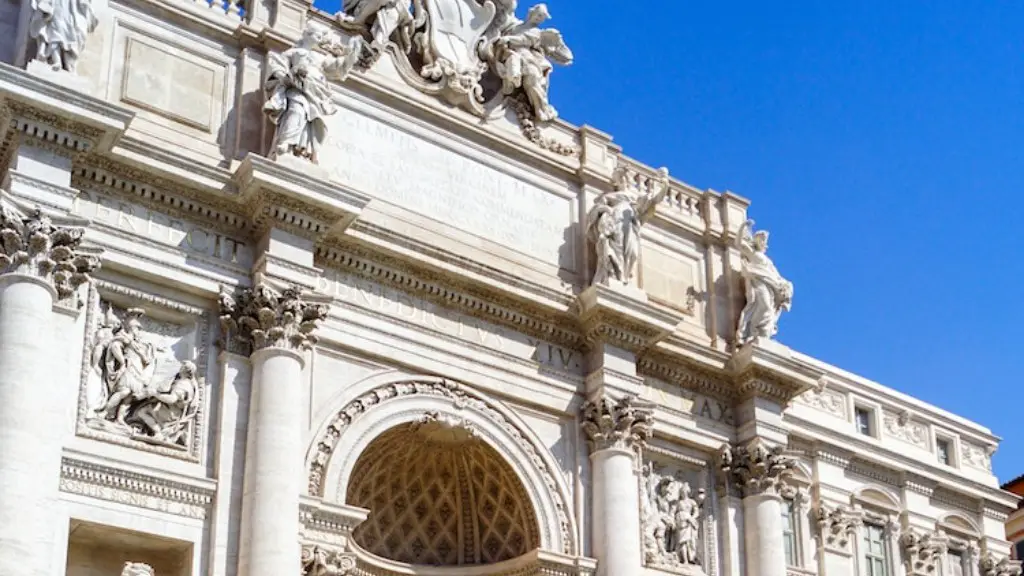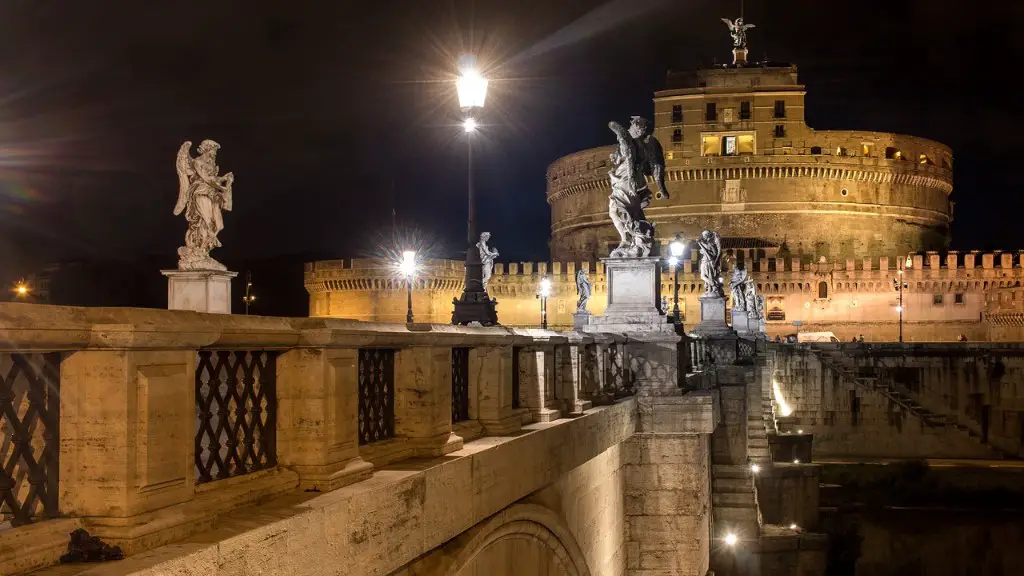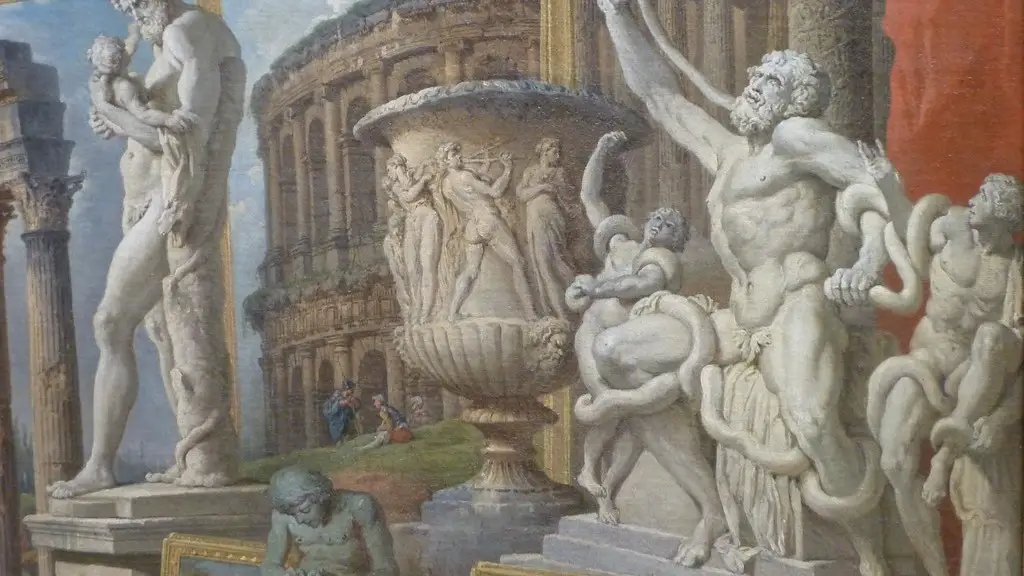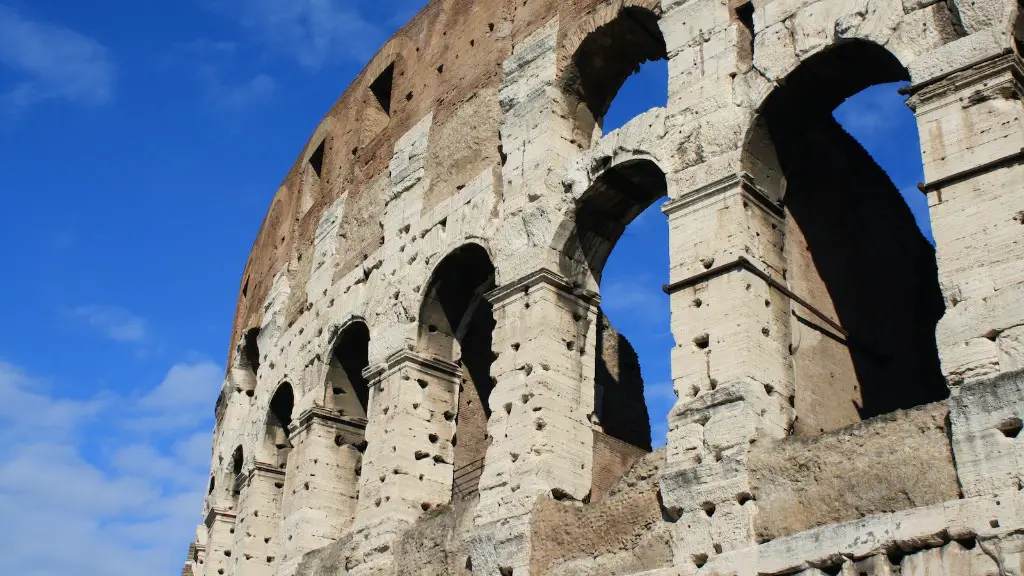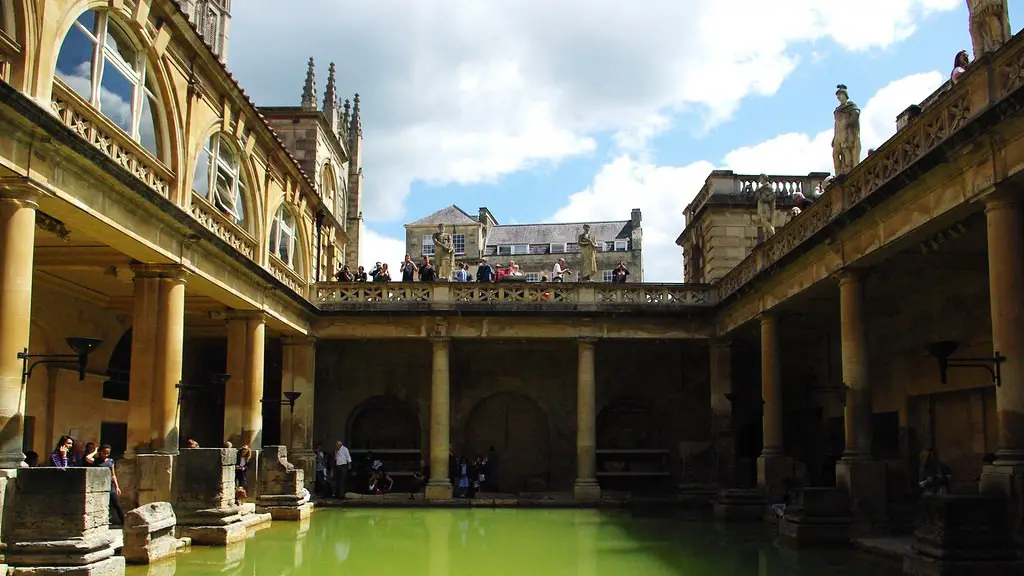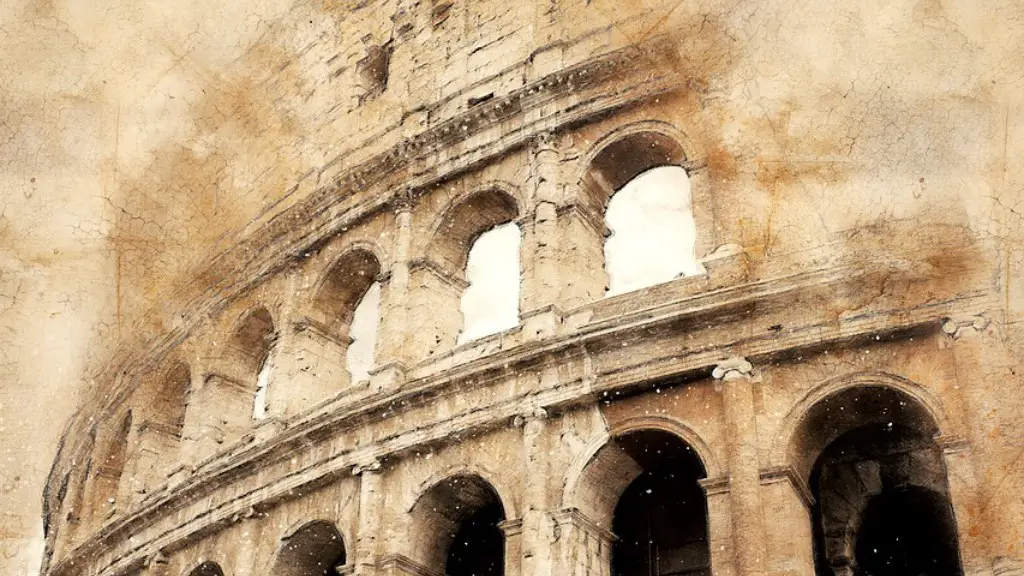The city of Rome was founded by a man named Romulus in 753 B.C. After he killed his brother Remus during a fight, he became the first ruler of Rome. Rome rose to power after they crushed the Etruscan city of Veii. The Roman Republic was free from the king’s rule, and this made Rome even more powerful. They had a strong military and conquered many lands. They became so rich, that they built a huge empire. They even built a road system so that their troops could march to battle quickly. The Roman Republic was even more powerful than the great Persian Empire.
The ancient city of Rome was one of the most influential and powerful centers of its time. Rome was known for its grandiose architecture and for its many great political, military, and cultural leaders. Ancient Rome was also an important hub of trade and commerce, and its impact can still be felt in many ways today.
Why was Rome so special?
Ancient Rome was a powerful civilisation that ruled for nearly a 1000 years, controlling a huge portion of Europe. Ancient Rome is remembered for its supreme power, advanced engineering, military successes, religious customs, entertainment and its brutality.
The Roman Empire was responsible for a number of inventions that have had a lasting impact on the world. Here are 10 of them:
1. Cement – The Romans were the first to develop cement, which is essential for constructing buildings and infrastructure.
2. Sanitation – The Romans developed a system of aqueducts and sewers that was far superior to anything that had come before. This helped to reduce disease and improve public health.
3. Roads – The Romans built a network of roads that spanned the entire empire. This made trade and transportation much easier and helped to facilitate the growth of cities and commerce.
4. Social care and welfare – The Romans established a number of institutions to care for the poor, the sick, and the elderly. This helped to create a more compassionate and just society.
5. Julian calendar – The Julian calendar, developed by the Roman scholar Julius Caesar, is still used in many parts of the world today.
6. Elements of surgery – The Romans made significant contributions to the field of surgery, including the development of anesthesia and the first use of surgical instruments.
7. Elements of the modern legal system – The Roman legal system served as the basis for many of
What are 3 things we get from ancient Rome
There are many things that we take for granted in our modern lives that were actually invented by the ancient Romans! Here are just a few examples:
Roads: The old proverb “all roads lead to Rome” (usually interpreted as “many paths may lead one to the same goal”) stems from the fact that originally they sort of did, or rather they came from Rome. The first Roman roads were built in order to facilitate trade and transportation of goods and military troops throughout the empire.
Central heating: The Roman hypocaust was a system of central heating used in Roman houses and public baths. Hot air was circulated under the floor and through the walls, warming the rooms above.
Concrete: The Romans were the first to develop a type of concrete made from lime and other materials. This allowed them to build massive structures like the Colosseum and the Pantheon.
The calendar: The Roman calendar was originally based on the lunar cycle, but was later reformed by Julius Caesar to better reflect the solar year. This is the calendar that we still use today!
Flushing toilets and sewers: The Romans were the first to develop a system of flushing toilets and sewers. This was a huge public health advancement,
Rome became the most powerful state in the world by the first century BCE through a combination of military power, political flexibility, economic expansion, and more than a bit of good luck. This expansion changed the Mediterranean world and also changed Rome itself. Rome’s military power was based on the professionalization of the army, the development of new tactics and technologies, and the willingness to use force to achieve its goals. Rome’s political system was based on the principle of the rule of law, which allowed for a certain degree of flexibility in the face of change. Rome’s economy was based on agricultural production and trade, and the expansion of the empire provided new markets for Roman goods. The combination of these factors allowed Rome to become the dominant power in the Mediterranean world.
What is Rome best known for?
Rome is most famous for its ancient ruins, including the Colosseum, the Pantheon, and the Roman Forum. The city is also home to the Vatican Museums, St. Peter’s Basilica, and the Sistine Chapel. Other popular tourist attractions include the Trevi Fountain, the Spanish Steps, and Piazza Navona.
The Romans were a great civilization that has left a lasting legacy on the world. Here are 13 things that the Romans did for us:
1. Fast food – The Romans were the first to introduce street stalls and “food on the move” as we might think of it today. This made it possible for people to grab a quick bite to eat without having to sit down in a restaurant.
2. Advertising and trademarks – The Romans were also the first to use advertising and trademarks to promote their businesses. This allowed them to reach a wider audience and make their products more recognizable.
3. Plumbing and sanitation – The Romans were the first to develop a system of plumbing and sanitation that was used in public baths and other public places. This helped to prevent the spread of disease and keep people healthy.
4. Towns – The Romans were the first to develop towns and cities as we know them today. They created a network of roads that connected these cities and allowed for trade and transportation.
5. Architecture – The Romans were known for their impressive architecture, which included the construction of roads, bridges, and public buildings.
6. Our calendar – The Roman calendar was the first to be based on the sun and used the
What impact did Rome have on the world?
The Romans were one of the most innovative civilizations of their time. They are responsible for many of the engineering feats that we still use today, such as their roads. The Romans built their roads to last, which helped to increase trade and transportation throughout their empire. Many of these roads are still in use today, testifying to the skill of the Roman engineers.
The Constitution of the United States was heavily inspired by the Roman Republic, which was one of the most stable and successful governments in history. Many of the most important features of our Constitution, including the checks and balances system, the bicameral legislature, and term limits and age requirements, were borrowed from Rome. In some cases, the Founders even copied specific terms from the Roman constitution, like “senate,” “capitol,” and “committee.” The Constitution of the United States was heavily inspired by the Roman Republic, which was one of the most stable and successful governments in history. Many of the most important features of our Constitution, including the checks and balances system, the bicameral legislature, and term limits and age requirements, were borrowed from Rome. In some cases, the Founders even copied specific terms from the Roman constitution, like “senate,” “capitol,” and “committee.”
What were Rome’s greatest achievements
The top Roman achievements are vast and varied. From their vast empire to their great buildings and contributions to law and language, the Romans have left a lasting legacy. Here are some of their most impressive accomplishments:
The Roman Empire: The Romans built one of the largest empires in history, spanning Europe, Africa, and Asia.
The Roman Army: The Roman army was one of the most formidable military forces in history. They conquered most of the world they knew and held it for centuries.
Founding Fathers of Many Cities: The Romans founded some of the most influential cities in the world, such as Rome, Constantinople, and Carthage.
The Great Builders of Old: The Romans were some of the greatest builders and engineers of antiquity. They constructed roads, aqueducts, and buildings that have stood the test of time.
Latin, the Eternal Language: Latin was the language of theRoman Empire and it became the lingua franca of the Western world. It is still used by the Catholic Church and other institutions.
The Twelve Tables and the Justinian Code: The Twelve Tables were a set of laws compiled in the 5th century BC. The Justinian Code was a codification of Roman law in the
1. The Romans were a very clean people and they would have baths together.
2. The Romans were very ingenious and they invented loads of things that we still use today.
3. The Roman’s most popular form of entertainment were Gladiator fights.
4. The rich Romans had servants to do everything for them.
5. We still use some Roman roads.
6. They worshipped a lot of different Gods and Goddesses.
7. Ancient Rome is underground.
What did the Romans invent for us?
The Roman military medical corps was one of the first dedicated field surgery units. They invented many surgical tools and pioneered the use of the cesarean section. Their most valuable contributions to medicine came on the battlefield. Under the leadership of Augustus, they established a military medical corps that was one of the first dedicated field surgery units.
The Colosseum is one of the most popular tourist attractions in Rome. It is a massive structure that was built over 2,000 years ago. It was once the site of famous gladiator contests. Today, it is a popular destination for tourists who want to learn about the history of Rome.
How were the Romans so advanced
The Roman army was professional and well-equipped. It was able to maintain a centralized organization and an elaborate literate culture. This allowed the Romans to field well-equipped armies.
Roman architecture has had a significant influence on modern architecture. Many modern buildings incorporate features of Roman design, such as domes, pillars, and arches. Roman building materials such as bricks, tiles, and concrete are also widely used in modern construction. Additionally, many modern structures, such as sports arenas, spas, and supermarkets, are modeled on Roman originals.
What are 5 facts about ancient Rome?
1. Rome was actually founded in 735 BC, though it was long thought to be founded in 753 BC by Romulus.
2. Cats are free to roam in Rome – there are even special laws in place to protect them!
3. The Roman’s eyes were often bigger than their stomachs – they were known for overeating!
4. Men in Rome could only wear togas – this was a sign of their status.
5. Women in Rome wore stolas – these were long, flowing dresses.
6. The coins in the Trevi Fountain are there for a reason – it is said that if you throw one in, you will be guaranteed a return trip to Rome!
7. The Roman Breathalyzer was used to test whether someone had been drinking wine – if they had, they would be punished.
8. The Colosseum was known for its bloody battles – often, there would be thousands of casualties.
The Colosseum is the most popular attraction in Rome. It is a large amphitheatre that was used in Roman times for gladiator battles and wild animal fights. Today, it is a popular tourist destination.
Conclusion
Ancient Rome was, and still is, one of the most impressive empires in human history. In terms of monetary worth, the Roman Empire was the most valuable empire ever. At its peak, the empire controlled over 5 million square kilometers of land and had a population of over 60 million people.
Ancient Rome was an example of a great empire. It had a strong economy and a strong military. It also had a lot of political power. Ancient Rome was important because it was a model for other empires.
